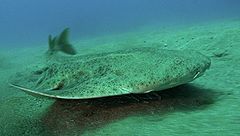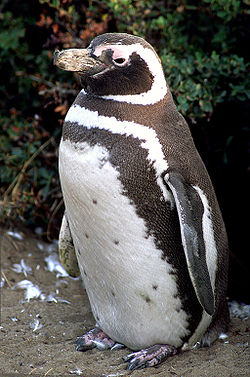Category Archives: Fishing
Fisherman Robbed of His Catch… By a Frog?
In a strange turn of events, a fisherman was left speechless after an enterprising frog hopped into his net, and proceeded to swallow his hard earned fish whole.
It appears the clever little creature had been biding his time, waiting for the fisherman to catch something before jumping in there and stealing away the prize.
The amateur fisherman, Valery Krugersky, was minding his own business and trying to relax in a lake just on the outskirts of the town of Chernigov, Ukraine.
Valery ingeniously makes use of an old curtain as a net, and was completely flabbergasted to see the frog hop out of the water and take what was rightfully his.
The frog, which was just a tad over six inches long, swallowed the catch whole, and then sat with a smug look upon his face, having had its fill.
All the hapless Mr. Krugersky could do was pull out his camera, and photograph the peculiar sight.
An engineer by trade, Mr. Krugersky had this to say: “I have seen a big pike jump in the net and eat the fish before but never a frog.”
There were a multitude of frogs milling about the lake, making boatloads of noise, however this frog made his way away from the crowd to jump into the make-shift net and eat the catch in mere seconds.
“I left the net in the lake and the frog just sat inside it for a long time making some noise.”
This just goes to show… Never leave your net unattended for even a second, you never know who might just be eying your prize.
Japanese Company Caught in $2.4 Million Fishing Bust!
A Japanese company was caught with their hands in the cookie jar. They were caught in one of the biggest fisheries bust in New Zealand, illegally reeling in 600 tonnes of fish.
The Fisheries ministry has said that Kanai Fisheries Company, Aurora Fisheries, a New Zealand fishing company, and four Japanese Citizens have pleaded guilt to a combine 54 charges in the Wellington district court.
Each charge means a hefty fine of up to $250,000, bringing the possible total to a staggering $1,350,000 in damages, not including other penalties.
Andrew Coleman, the Fisheries Ministry’s field operations deputy chief executive, has commented that the operation lasted almost two years, involved 25 staff, and was the biggest operation in the history of the organization.
He went on to comment that the Japanese company bought out part of Aurora Fisheries quota which in turned allowed them to fish in New Zealand waters.
Tomi Maru 87, the company’s fishing boat, then proceeded to catch 112 tonnes of silver warehou and 481 tonnes of ling in a short two year period. The problem is that the area where the fish were reeled in was off the southern coast of the South Island, and outside of Aurora’s quota area.
However the company reported that the fish were caught well inside these boundaries. The export value of the ill gotten fish was estimated to be in the vicinity of $2.4 Million.
It should be noted that even though a guilty plea has been entered, does not mean any convictions will be made… Only time will tell.
Experts Backing Law Which Bans Shark Fishing
Conservationists and researchers are lashing out after the 11th fish was killed in BDA waters in the past week.
Are sharks dangerous man eating monsters, an excellent source for protein, or just another example of humanity being cruel and exploiting the oceans?
An 11 foot tiger shark being hacked to bits on a dock in Somerset this week really got the juices flowing in a lot of people.
The children seemed to be at ease, eagerly awaiting their turn to have their photo taken with the beast, however some other concerned citizens have said that the endangered animal had simply been killed for the sport of it.
The owner of the SCUBA firm Blue Water Diving, Michael Burke, has said that he believes that Bermuda should follow Palua and the Maldives example, and protect sharks through legislation.
He explained: “I really don’t see the need to catch a tiger shark. There’s very little use for them. It is not a good eating fish.
“We don’t need to do that anymore. It is a different world we live in.
“Those images of hunters standing with their feet on a lion’s head as some sort of trophy, it is an anachronism.
“Palau has banned shark fishing, we could do the same. We did it for turtles in the 1800s, why not sharks?”
Experts, and the local community seem to be in agreement with him, and will soon have a vote to see about banning the killing of these endangered sharks.
Fishing Experts Claim: Shark Numbers Could Increase Drastically!
It has been warned that if a federal fishing ban along the east coast of Australia gets approved, then the sharks will go up in number exponentially, and the price of seafood will more than double.
This warning was issued yesterday by fishing experts and seafood industry veterans, during a firestorm of opposition to the establishment of the eight “no take” marine protection zones. These protection zones would also include a zone off of the Tweed Coast, stretching in commonwealth waters from Southern NSW to Torres Strait.
This idea was met with opposition by Paul Burt, a local fishing expert, as he warned that if fishing was banned in that particular area that more sharks would breed and head into those waters seeking the safety they offer..
“A lot of attacks that occur with sharks … occur where the marine parks are situated,” he began.
“The fish life flourishes so much that it does become an uncontrollable habitat.”[sic]
What winds up happening in these :”uncontrollable habitats” is that there will be an increase in the fish population, and this would lead to more sharks, he went on to explain.
Peter Peters, a seafood industry veteran, who also just happens to be the owner of Peter’s Fish Market located at Main Beach, has commented that imposing more limits on where commercial fishing boats can fish might make the prices of seafood skyrocket to the extent that it would be unaffordable for many ordinary Australians.
“I would say it would definitely double the price because the fishermen won’t be catching as much, their costs of traveling extra distances will go up and that will be passed on,” he explained.
Well, deliberation will continue, hopefully the outcome won’t rely solely on one side of the story…
Hundreds Of Dead Penguins in… Brazil??
This is kind of weird… Apparently there are hundreds of dead penguins, who look like they’ve starved to death, are washing up on the beaches of Brazil of all places. This is very worrying for scientists on many levels, however the main focal point is just what is causing then to perish.
Somewhere in the neighborhood of 500 of the flightless birds have been found over the past week and a half on Peruibe, Praia Grande, and the Itanhaem beaches in Sao Paolo State. This comment comes from Thiago de Nascimento, who is a biologist with the Peruibe Aquarium.
The majority of these penguins were Magellan penguins, on their way north from Argentina, Chile and the Falkland Islands, searching for food in warmer waters.
What is so troubling scientists so much, is that many of these penguins are not finding the food they seek. Autopsies performed on many of the penguins revealed that their stomachs were entirely empty..
Researcher are investigating whether the fault lays in strong currents, or colder waters than what have been the norm, which may have caused the species the penguin relies on for food to thin out, or if maybe human activity is to blame.
“Overfishing may have made the fish and squid scarcer,” Nascimento has explained.
He also said that it is common for penguins to make their way north this time of the year. Unfortunately, some of them do happen to lose their way and perish from hunger or exhaustion, and then wind up dead on the Brazilian coast far from their homes.
However, in these numbers it is a grave concern… Hopefully they find an answer soon, before these creatures wind up the going the way of the do do bird.
Largest Blue Catfis Ever Caught – 130 Pounder Reeled in in the Missouri River!
What may be the world’s largest catfish was reeled in by Greg Bernal, from Florissant, and Janet Momphard, of St Charles.
This blue wonder, which was weighed in to be 130 pounds, beat the State record in Misouri by 27 pounds and might just outweigh the world record by 6 pounds.
This is amazing, as blue catfish generally only grow to be between 3 pounds and normally no more than 40 pounds, which suggests that the catfish dragged in had fed on his share of the food supply.
It took the couple around 15 minutes to drag the monstrous catfish toward their tiny fishing boat, kicking and screaming the whole way no doubt. It then took another 30 minutes to land the giant fish, and then only with the aid of two nets could they get the catch into their tiny fishing boat. The fish was caught in the Missouri River, close to the Columbia Bottom conservation area.
In order to catch this amazing catfish, they used a hunk of Asian Carp, which had willingly jumped into their boat, for bait.
There is still a lot of paperwork, and hemming and hawing to be done, before the catch is certified as a world record. However, the Missouri Department of Conservation has commented that there is no doubt at all, that this monstrous catfish broke the world record.
Research Reveals that Old Theory of Phytoplankton Growth Wrong
A recent study has revealed that the previously accepted theor of how and phytoplankton appear in the worlds’ oceans is in fact not correct.
The results of the study have overturned over 50 years of common knowledge about the growth of phytoplankton, which is the foundation of almost all life in the ocean as well as many major fisheries. These results also bring to light new concerns that global warming may actually be stunting the growth of phytoplankton, rather than increasing it.
The study was published in the journal Ecology by a professor of botany at the Oregon State University, Michael Behrenfeld, who just happens to be one of the leading experts in the world when it comes to using remote sensors to take a gander at the productivity in the ocean. This study was also backed up by NASA, it’s good to see they still have an interest in what goes on down here, and not just in what goes on in space.
The new study has concluded that the theory developed in 1953, the “critical depth hypothesis”, is not only incomplete, but also inaccurate in explaining summer phytoplankton appearances which have been observed for the last few centuries in the North Atlantic Ocean. These appearances are the foundation of many of the worlds’ fisheries.
The old theory stated that due to increased light in the spring, the phytoplankton bloomed more, however its been discovered that the production actually goes up in the middle of winter, effectively blowing that theory out of the water.
The new theory is that the winter storms churn the water, and make it more difficult for the organisms that eat the phytoplankton to find them, hence the phytoplankton is more abundant in those months.
Fishermen Reel In Rare Catch, “Could be last of its kind”
Fishermen have managed to reel in an edangered species of shark off Plymouth and experts are saying that it could be the very last of its kind swimming about the UK waterways. It very well might be. The angel shark is classified as a “critically endangered” species, and has been believed to be extinct in the North Sea, and is very nearly so in other areas of the Mediterranean. It is thought that there are large pockets of them floating around the Canary Islands, and many environmentalist groups are pushing for urgent action to prevent this magnificent species of shark from disappearing off the face of the planet.
The extraordinary catch, identified as an angel shark, was brought ashore to the Barbican Fish Quay market this past Tuesday.
Some resident experts at the Marine Aquarium has said that this is the first time an angel shark has made an appearance in a UK fish market since 1998.
In April of 2008, the UK Government granted the angel shark full protection under the Wildlife and Countryside Act. This means that it is illegal to fish them, trade them, export them, and sell them. However, the animal has yet to be added to the OSPAR Priority List of Threatened and Endangered Species, even though the proposal to get it on there was deemed appropriate the by Study Group on Elasmobranch Fishes, the general motion was quashed and the nomination rejected.
The fisherman who reeled in the shark, got into contact with the aquarium to tell them of the mistake – that they had inadvertently reeled in an angel shark which was about 1.2 meters in length.
An employee of the aquarium, John Crouch, explained: “Globally this species is listed as critically endangered and it was thought to have been fished to extinction in the North Sea in the 1990s.”
“This may well be the last of its species ever to been seen in UK waters.”
He went on to explain that this species of shark are especially vulnerable to accidental fishing, such as bottom trawling, because they generally prefer to make their homes in shallower waters closer to shore and are sometimes caught by any number of fisheries in the area.
He went on to add: “The angel shark is especially vulnerable due to its very long life span, around 35 years, and the fact that they do not mature until they are in their teens.”
“That’s a very long time to evade being caught when each fishable part of the North Sea is trawled seven times each year. It is thought that there are still populations of this species around the North of Africa and off the Canary Islands which is perhaps where this one came from.” John went on to explain that most of the native shark species have seen a recent decline of 90 percent since the 20th century began due to overfishing and hapless fishermen.
Record Breaking Goldfish, Biggest Ever Caught in Britain!
Nick Richards, a 16 year old fishing enthusiast from the UK, reeled in a whopper of a goldfish from a lake in Poole. The fish weighs an astounding 5 lbs, which is only 2 lbs less than the world record for goldfish. By all accounts it appears to be the biggest goldfish ever caught in Britain, and the youngster is quite pleased with the catch. He had set out to catch a common carp, which happen to be in the same family as the goldfish, but instead he reeled in this golden monster.
This is quite a catch, considering that goldfish are only generally 1 inch to 9 inches long, and generally do not weigh in at any more than however they do have the habit of growing to suit their surroundings. Another reason this is such an amazing catch is that goldfish can generally only survive in tropical to subtropical waters, and any sudden changes in temperature can be potentially fatal for the fish.
When asked to comment on the catch he had this to say, “Apparently it’s the biggest ever caught in the UK. I’ve heard it weighs only 2lb less than the world record.”
I would hate to burst the kids’ bubble, but while this may be the largest goldfish in the UK, the record still goes to the goldfish discovered on the west coast of Thailand in the Andaman Sea. That fish measured a staggering 2.5 meters long, by 1.70 meters tall! No weight was given for the monstrous fish, but I guarantee it was a wee bit over 7 lbs. Sorry kid, better luck next time.
That being said, no one can say for sure just how the goldfish Nick caught got into the lake, however there are a few generalized ideas which may explain the phenomenon.
It is believed that the goldfish started out as one of the prizes commonly doled out at fairgrounds in Dorset town, but was later abandoned when it got too big to live in its bowl. It is not an uncommon occurrence for prize goldfish such as these to be tossed into lakes and ponds, as the owners get bored of them, or they do not want to be bothered with finding more suitable living arrangements when they outgrow their bowl.
This is good news for fishing enthusiasts such as Nick, as they can sometimes reel in a whopper from surrounding lakes, and have a good fish story to tell. However it should be noted that the majority of the goldfish which are tossed aside as yesterday’s news, often don’t make it long enough in the wild to be considered today’s news.
It is not known what Nick plans to do with the fish, however you can rest assured it is most likely not going into his frying pan.
“Nesski” the Naughty Sea Monster?
Nessie’s Russian cousin, “Nesski” seems to be misbehaving in a rather morbid way. It seems to have acquired the taste for fishermen!
Nesski has now been attributed with 19 deaths in the Chany lake over the years. According to Russian experts, that number may actually be higher, but no one has taken note of it yet.
On the books, these deaths have been reported as drowning. However, it is interesting to note that of the “drowning” victims only a few have actually been recovered. The bodies that have been recovered have been reported to be “half eaten”. Off the record, this has led to the speculation by many of the local community that “Nesski” has acquired a taste for human flesh.
Nesski claimed its latest victim, a 59 year old man, when the hapless fisherman tried to reel it in last week. Vladimir Golishev, the man’s close friend, explains what happened. “I was with my friend… some 300 yards from the shore. He hooked something huge on his bait, and he stood up in the boat to reel it in. But it pulled with such force that he overturned the boat. I was in shock – I had never seen anything like it in my life. I pulled off my clothes and swam for the shore, not daring hope I would make it.”
Golishev did in fact make it back to the shore, however his long time fishing partner, vanished beneath the waves, never to be seen or heard from again.
This sad incident is a painful reminder of what happened only three short years ago, when Vladimir lost his 32 year old grandson to the Beast. Mikhail, a Russian soldier, was dragged beneath the lakes’ placid waters, after something large capsized his boat. “The lake was calm, but suddenly the boat was rocking, and it capsized.” recalled Mikhail’s grandmother, Nina Doronin.
The couple has lived on the shores of Chany their entire lives. They firmly believe that Nesski is real, and is responsible for the death of their grandson, as well as the other missing fishermen. The most frustrating aspect of the whole thing, is that they have never personally seen the monster responsible for the crime.
Nesski is thought to be a pleiosaur, much like its counterpart in the Loch Ness. A pleiosaur is an aquatic dinosaur with a rather long neck, small head, large body, and an almost comicly short tail and fins. According to experts on the subject however, these beats went extinct at the end of the Cretaceous period.
The reports of Nesski sightings have been coming in a steady flow for decades, though actually locating such a beast really shouldn’t be too difficult, given its habitat. The lake is only 57 x 55 miles across, and only 23 feet deep at its deepest.. Which begs the question.. Why has no one proven the existence of the monster? But more importantly… Why can’t you find the missing fisherman in water so shallow?









